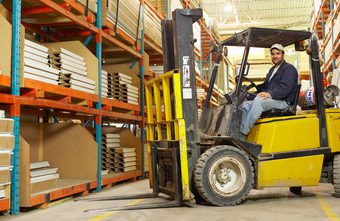Home » Course Layouts » Free Course Layout Udemy
Both employers and employees have responsibilities for material handling safety. Material handling is the movement, protection, storage and control of materials and products throughout manufacturing, warehousing, distribution, consumption, and disposal.
0
30
English
English [CC]
FREE
- Learn basic syntax that can apply to any language.
- Learn what is a programming language and the basic concepts for beginners.
- Understand what is Javascript in it's truest form.
- Know the basic syntax of Javascript.
- Know some hidden quirks in Javascript.
Description
Overview/Description
As an employer, you have a responsibility to provide protection from injury to your employees, even in the simple act of moving materials around the workplace.
What should your company be doing to protect employees?
- Engineering controls are the most common ways to prevent injuries and make the job easier. For example, you can configure material-handling workstations to minimize lifting and reduce stress on workers’ bodies. You might also be able to reduce the size and weight of objects to be lifted manually to minimize the risk of back injuries. Perhaps most important of all, you can provide and encourage the use of a variety of effective material-handling aids.
- Administrative controls can also be used to reduce injuries—for example, providing regular and adequate rest periods for employees who do a lot of lifting to allow tense muscles to relax or using job rotation to reduce the wear and tear on workers’ bodies.
- Work policies and practices intended to reduce the chance of material-handling injuries are also essential. These policies and practices include such things as training in safe lifting and carrying techniques and encouraging employees to keep strong and flexible through physical conditioning and stretching exercises, both of which can help prevent injuries.
- Always practice safe lifting and carrying.
- Use material-handling equipment as an alternative to manual lifting and carrying whenever possible
- Watch their backs. Even when using material-handling aids, workers still need to think about back posture to prevent injuries.
- Plan ahead. Is the load stable? Does it need to be secured? Is the route of travel clear? Are there hazards along the route such as ramps, pedestrian traffic, or tight spaces?
- Get help, if necessary. A major contributing factor in lifting-related injuries is the weight and bulkiness of the objects being lifted.
- Wear appropriate PPE when using material-handling aids. Employees may need gloves to protect against sharp edges or rough surfaces, safety shoes with steel toes to protect their feet, and a hard hat, too, if there’s a risk of falling objects.
- Material Handling Safety
- Introduction - Material Handling Safety
- Accident or Injury Problems
- Manual Handling of Materials
- Mechanical Handling of Materials
- Storing Materials
Course content
-
- Material Handling Safety 00:20:00
- Introduction 00:20:00
- Accident or Injury Problems 00:30:00
-
- Manual Handling of Materials 04:00:00
- Mechanical Handling of Materials 03:00:00
- Storing Materials 02:15:00
- Importance Of Health And Safety In The Workplace FREE 00:10:00
- Basic Health & Safety at Workplace Video FREE 00:20:00
N.A
- 5 stars0
- 4 stars0
- 3 stars0
- 2 stars0
- 1 stars0
No Reviews found for this course.
Instructor
OpenCoursa
Accessible Education for Everyone
5
5
6
24220
4637
We are an educational and skills marketplace to accommodate the needs of skills enhancement and free equal education across the globe to the millions. We are bringing courses and trainings every single day for our users. We welcome everyone woth all ages, all background to learn. There is so much available to learn and deliver to the people.
Explore Free Courses
Access valuable knowledge without any cost.
{"title":"","show_title":"0","post_type":"course","taxonomy":"course-cat","term":"engineering-skills,health-and-safety","post_ids":"","course_style":"free","featured_style":"course6","masonry":"","grid_columns":"clear4 col-md-3","column_width":"268","gutter":"30","grid_number":"4","infinite":"","pagination":"","grid_excerpt_length":"20","grid_link":"1","grid_search":"0","course_type":"","css_class":"","container_css":"","custom_css":""}












